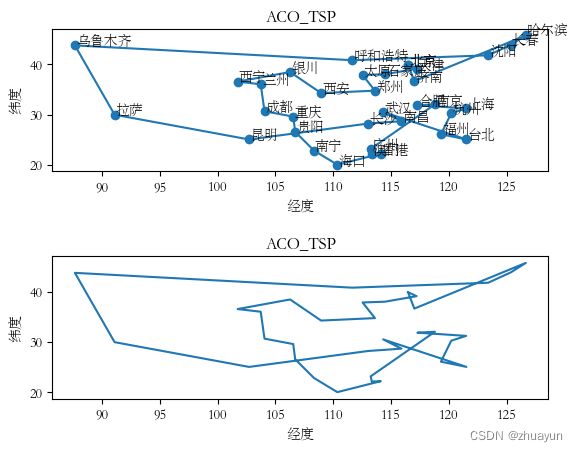- Python编程:使用Opencv进行图像处理
【参考】https://github.com/opencv/opencv/tree/4.x/samples/pythonPython使用OpenCV进行图像处理OpenCV(OpenSourceComputerVisionLibrary)是一个开源的计算机视觉和机器学习软件库。下面将从基础到高阶介绍如何使用Python中的OpenCV进行图像处理。一、安装首先需要安装OpenCV库:pipinst
- 莫队算法 —— 将暴力玩出花
秒啦
算法
莫队算法——将暴力玩出花一、为什么需要莫队?——暴力法的瓶颈我们已经学会了用分块处理一些在线的区间问题。现在,我们来看一类特殊的离线区间查询问题。“离线”意味着我们可以把所有查询先读进来,再按我们喜欢的顺序去处理它们。思考一个问题:给定一个长度为N的数组,M次询问。每次询问一个区间[l,r],问区间内有多少种数字至少出现了2次?那我们回到最朴素的暴力。纯暴力:对于每个询问(l,r),都for一遍,
- Web3前沿科技:开启数字资产交易新征程
AI天才研究院
AI大模型企业级应用开发实战AgenticAI实战AI人工智能与大数据web3科技ai
Web3前沿科技:开启数字资产交易新征程关键词:Web3、数字资产交易、区块链、智能合约、去中心化金融摘要:本文聚焦于Web3前沿科技在数字资产交易领域的应用与发展。详细阐述了Web3的核心概念、相关技术原理,包括区块链、智能合约等。通过具体的算法原理和Python代码示例,深入剖析了数字资产交易在Web3环境下的运行机制。同时,结合实际项目案例,讲解了开发环境搭建、代码实现与解读。探讨了Web3
- 区块链技术概述:从比特币到Web3.0
闲人编程
Python区块链50讲区块链web3python元宇宙比特币安全
目录区块链技术概述:从比特币到Web3.0引言:数字革命的下一篇章1.区块链技术基础1.1区块链定义与核心特征1.2区块链数据结构可视化2.比特币:区块链的开端2.1比特币的核心创新2.2比特币交易生命周期3.以太坊与智能合约革命3.1以太坊的核心创新3.2智能合约执行流程4.Web3.0:互联网的新范式4.1Web3.0的核心特征4.2Web3技术栈5.Python实现简易区块链系统5.1区块类
- 【Python常用模块】_Pandas模块3-DataFrame对象
失心疯_2023
Python常用模块数据分析pandas数据挖掘python数据统计数据处理
课程推荐我的个人主页:失心疯的个人主页入门教程推荐:Python零基础入门教程合集虚拟环境搭建:Python项目虚拟环境(超详细讲解)PyQt5系列教程:PythonGUI(PyQt5)教程合集Oracle数据库教程:Oracle数据库教程合集MySQL数据库教程:MySQL数据库教程合集优质资源下载:资源下载合集
- 高斯混合模型GMM&K均值(十三-1)——K均值是高斯混合模型的特例
phoenix@Capricornus
模式识别与机器学习均值算法机器学习算法
EM算法与K均值算法的关系K均值可以看成是高斯混合模型的特例。对K均值算法与EM算法进行比较后,可以发现它们之间有很大的相似性。K均值算法将数据点硬(hard)分配到聚类中,每个数据点唯一地与一个聚类相关联,而EM算法基于后验概率进行软(soft)分配。事实上,可以从EM算法推导出K均值算法。考虑一个高斯混合模型,其中混合分量的协方差矩阵由σ2I{\sigma^2}Iσ2I给出,其中σ2{\sig
- 《Python数据分析与挖掘实战》Chapter8中医证型关联规则挖掘笔记
茫茫大地真干净
机器学习Python数据挖掘
最近在学习《Python数据分析与挖掘实战》中的案例,写写自己的心得。代码分为两大部分:1.读取数据并进行聚类分析2.应用Apriori关联规则挖掘规律1.聚类部分函数分析:defprogrammer_1():datafile="C:/Users/longming/Desktop/chapter8/data/data.xls"processedfile="C:/Users/longming/Des
- Practical TLA+ 项目中的Dekker算法形式化验证
焦习娜Samantha
PracticalTLA+项目中的Dekker算法形式化验证practical-tla-plusSourceCodefor'PracticalTLA+'byHillelWayne项目地址:https://gitcode.com/gh_mirrors/pr/practical-tla-plus概述本文分析PracticalTLA+项目中关于Dekker互斥算法的形式化规范。Dekker算法是解决多线
- 【C++算法竞赛】前缀和+桶数组
YLCHUP
C++算法技巧算法c++开发语言数据结构哈希算法c语言笔记
文章目录1.前缀和基础2.算法原理3.例题讲解[P1114“非常男女”计划](https://www.luogu.com.cn/problem/P1114)[P11965[GESP202503七级]等价消除](https://www.luogu.com.cn/problem/P11965)[P10724[GESP202406七级]区间乘积](https://www.luogu.com.cn/pro
- 【机器学习与数据挖掘实战 | 医疗】案例18:基于Apriori算法的中医证型关联规则分析
Francek Chen
机器学习与数据挖掘实战机器学习数据挖掘Aprioripython关联规则人工智能
【作者主页】FrancekChen【专栏介绍】⌈⌈⌈机器学习与数据挖掘实战⌋⌋⌋机器学习是人工智能的一个分支,专注于让计算机系统通过数据学习和改进。它利用统计和计算方法,使模型能够从数据中自动提取特征并做出预测或决策。数据挖掘则是从大型数据集中发现模式、关联和异常的过程,旨在提取有价值的信息和知识。机器学习为数据挖掘提供了强大的分析工具,而数据挖掘则是机器学习应用的重要领域,两者相辅相成,共同推动
- 利用chatGPT提取复杂json数据到excel文件中
z日火
工具使用excelchatgptjson
利用chatGPT提取复杂json数据到excel文件中1利用swagger导出json类型的接口数据2使用hiJson工具查看json结构3利用ChatGPT写python代码解析数据4复制代码到vscode运行任务说明:整理一个项目的所有接口,保存到excel文档中。在这里插入图片描述1利用swagger导出json类型的接口数据2使用hiJson工具查看json结构我需要json数据的"pa
- 提示词编程语言设计艺术探索
AI天才研究院
计算AI人工智能与大数据AI大模型企业级应用开发实战javapythonjavascriptkotlingolang架构人工智能大厂程序员硅基计算碳基计算认知计算生物计算深度学习神经网络大数据AIGCAGILLM系统架构设计软件哲学Agent程序员实现财富自由
《提示词编程语言设计艺术探索》关键词:提示词编程语言,设计艺术,编程语言设计,核心算法,实例分析,项目实战摘要:本文旨在深入探讨提示词编程语言的设计艺术,从基础概念到核心算法,再到实际应用和未来趋势,全面解析这一领域的关键技术和设计理念。通过具体的实例分析和项目实战,帮助读者更好地理解和掌握提示词编程语言的设计与实现。引言与概述1.1提示词编程语言的背景和重要性提示词编程语言(Prompt-Bas
- 【Python深度学习】零基础掌握Pytorch Pooling layers nn.MaxPool方法
Mr数据杨
Python深度学习python深度学习pytorch
在深度学习的世界中,MaxPooling是一种关键的操作,用于降低数据的维度并保留重要特征。这就像是从一堆照片中挑选出最能代表某个场景的那张。PyTorch提供了多种MaxPooling层,包括nn.MaxPool1d、nn.MaxPool2d和nn.MaxPool3d,它们分别适用于不同维度的数据处理。如果处理的是声音信号(一维数据),就会用到nn.MaxPool1d。而处理图像(二维数据)时,
- 误差的回响:反向传播算法与神经网络的惊天逆转
田园Coder
人工智能科普人工智能科普
当专家系统在20世纪80年代初期大放异彩,成为人工智能实用化的耀眼明星时,另一股曾经被宣判“死刑”的力量——连接主义(神经网络)——正在寒冬的冻土下悄然涌动,孕育着一场惊天动地的复苏。马文·明斯基和西摩·帕尔特在1969年《感知机》专著中那精准而冷酷的理论批判,如同沉重的封印,将多层神经网络的研究禁锢了近二十年。他们指出的核心死结——缺乏有效算法来训练具有隐藏层的网络——仿佛一道无法逾越的天堑。单
- 根包含文件——Luaconf.h (src)
LLLLLLLLLLLLLL265161
InsideLualuainteger编译器alignmentc++dll
Luaconf.h是配置的总集,定义了平台相关的设置,是所有文件都包含的,即RootlyIncluded。0.前言开始关注Lua也是06年六月的事情,《程序员》的2006年第六期中,我独独看中了Lua,而不是当时我已经比较熟悉的Python和Ruby,即使它们我都关注了好几年,但是都没有Lua给我的震撼大。于是那个夏天,稍微地尝试读了Lua的代码。开学后,我突然觉得自己有点受唆使,轻信了动态的福音
- Python3获取5000个元素的单字符表
DechinPhy
技术背景此前考虑过一个问题,有没有办法获取到python里面所有定义好的单字符的表,比如我们获取5000个不一样的单字符,但是常用的chr(number)的方法里面包含了太多的非字母条目,比如缩进换行符等,也会被识别为长度为1的符号。因此需要在此基础上加一个isalpha()的判断。输出5000个字符示例先解释一下思路,我们还是遍历chr中所包含的字符,此时得到的是所有的长度为1的字符,再用str
- 【安装Stable Diffusion以及遇到问题和总结】
岁月玲珑
AIstablediffusionAI编程AI作画
在本地安装部署StableDiffusion,需要准备好硬件环境,安装相关依赖,然后配置模型。下面为你详细介绍安装部署的步骤:一、硬件要求显卡:需要NVIDIAGPU,显存至少6GB,推荐8GB及以上。系统:Windows10/11、Linux(Ubuntu等)或macOS(需要Rosetta2)。内存:至少16GBRAM。存储空间:准备10GB以上的可用空间。二、软件准备首先要安装Python和
- 力扣网C语言编程题:接雨水(双指针法)
魏劭
逻辑编程题C语言c语言leetcode算法
一.简介前面文章是以动态规划方法实现的,文章如下:力扣网C语言编程题:接雨水(动态规划实现)-CSDN博客本文继续针对力扣网的接雨水问题,以另一种解题思路(双指针)以C语言实现和Python实现。二.力扣网C语言编程题:接雨水(双指针法)题目:接雨水给定n个非负整数表示每个宽度为1的柱子的高度图,计算按此排列的柱子,下雨之后能接多少雨水。示例2:输入:height=[4,2,0,3,2,5]输出:
- C++ Lambda表达式详解:从入门到精通
Jay_515
c++Lambda
Lambda表达式是C11引入的最重要特性之一,它彻底改变了我们在C中编写函数对象的方式。本文将带你全面掌握Lambda表达式的使用技巧!1.什么是Lambda表达式?Lambda表达式是C++11引入的一种匿名函数对象,它允许我们在需要函数的地方内联定义函数,无需单独命名。Lambda的出现极大简化了代码,特别是在使用STL算法时。为什么需要Lambda?简化代码:避免为简单操作单独编写函数对象
- Tiktok App 登录账号、密码、验证码 XOR 加密算法
抖音App登录账号、密码、验证码XOR加密算法%E9n+z,\&R1a4b.^流程分析登录TiktokAPP时,通过抓包发现账号密码是非明文传输的。getUserProfile($userId,$secUid);echo"\n\n视频列表:\n";echo$tiktok->getMixList($userId);//示例:加密后的密码hex字符串$encrypted_hex="7472607771
- mongodb和redis的区别:
huangbfeng
mongodbredis数据库
1、内存管理机制Redis数据全部存在内存,定期写入磁盘,当内存不够时,可以选择指定的LRU算法删除数据。MongoDB数据存在内存,由linux系统mmap实现,当内存不够时,只将热点数据放入内存,其他数据存在磁盘。2、支持的数据结构Redis支持的数据结构丰富,包括hash、set、list等。MongoDB数据结构比较单一,但是支持丰富的数据表达,索引,最类似关系型数据库,支持的查询语言非常
- 数据库系统工程师简要概括笔记
Mint_Datazzh
数据库系统工程师数据库笔记数据库系统工程师
文章内容仅为粗略总结知识,便于个人复习思考原文链接:数据库系统工程师简要概括笔记–笔墨云烟数据库系统工程师—1.1计算机硬件基础知识数据库系统工程师—1.2计算机体系结构与存储系统数据库系统工程师—1.3安全性、可靠性与系统性能评测基础知识数据库系统工程师—2.程序语言基础知识数据库系统工程师—3.1~3.4线性结构、数组和矩阵、树和二叉树、图数据库系统工程师—3.5排序算法数据库系统工程师—3.
- Python各版本发布时间和重要特性
mosquito_lover1
python
1.Python1.x:-Python1.0(1994年1月):第一个正式版本。-Python1.6(2000年9月):最后一个1.x版本。2.Python2.x:-Python2.0(2000年10月):引入了列表推导、垃圾回收等特性。-Python2.7(2010年7月):Python2.x系列的最后一个版本,长期支持至2020年1月1日。3.Python3.x:-Python3.0(2008
- 结构化数据增强的生成式算法案例:客户交易数据增强
python游乐园
数据深度学习大数据算法学习
1基础信息1.1案例背景这是一个用于增强结构化客户交易数据的生成式算法。这种类型的数据增强在金融、电子商务等领域非常有用,可以帮助解决数据不平衡问题或在小数据集上提高模型性能。1.2问题定义给定原始交易数据集D={x₁,x₂,...,xₙ},其中每条记录包含:交易金额交易时间客户年龄客户收入水平交易类别地理位置是否为欺诈交易(标签)目标:生成与原始数据分布相似但多样化的新样本,同时保持字段间的合理
- LLMs基础学习(八)强化学习专题(7)
汤姆和佩琦
NLP学习Actor-Critic算法
LLMs基础学习(八)强化学习专题(7)文章目录LLMs基础学习(八)强化学习专题(7)Actor-Critic算法基础原理算法流程细节算法优缺点分析算法核心总结视频链接:https://www.bilibili.com/video/BV1MQo4YGEmq/?spm_id_from=333.1387.upload.video_card.click&vd_source=57e4865932ea6c
- python中用matplotlib画图解决中文问题!!!!!!!终于ok了
luckylbb
python爬虫
在网上用了很多方法基本一样最后终于解决了,分享一下,前面几步似曾相识,但是依旧我发解决问题,重点在最后一步,亲测有效!!!!1、首先在Windons\Fonts下面找到simhei的字体没有就去下载,其实就是黑体,将它拖到桌面备用2、importmatplotlibprint(matplotlib.matplotlib_fname())输入命令查找到自己下载的matplotlib配置文件的位置我的
- Python使用matplotlib绘制图像时,中文图例或标题无法正常显示问题
独不懂
Pythonpythonmatplotlib开发语言
Python使用matplotlib绘制图像时,中文图例或标题无法显示问题解决方法一、问题描述二、解决方法欢迎学习交流!邮箱:z…@1…6.com网站:https://zephyrhours.github.io/一、问题描述Matplotlib库是Python中经常使用的绘图工具,但是有时候我们在使用plt绘制图像,需要将英文标题或者图例显示为中文样式,总会出现无法显示的问题,具体情况如下:imp
- Python 文件操作与 wc 工具的重构:从文件对象到输入重定向的全面指南
面朝大海,春不暖,花不开
Python基础python重构开发语言
文章大纲引言在编程世界中,文件操作是一项基础且至关重要的技能。无论是读取配置文件、处理日志,还是实现数据持久化,文件操作都扮演着核心角色。Python作为一门简洁而强大的语言,提供了直观的文件处理接口,其中open函数和文件对象是开发者最常使用的工具。通过这些工具,我们可以轻松实现文件的读写操作。本文将深入探讨Python文件操作的各个方面,从open函数的基本用法到文件对象的操作方法,再到资源管
- AI助力基因数据分析:用Python玩转生命密码的秘密
Echo_Wish
前沿技术人工智能人工智能数据分析python
AI助力基因数据分析:用Python玩转生命密码的秘密说到基因数据,听起来是不是感觉有点高大上?其实,基因数据分析正变得越来越“接地气”,而AI正是这条路上的神奇钥匙。今天,咱们就用Python聊聊如何利用AI技术做基因数据分析与建模,帮你破解生命的密码,找到疾病预测、个性化医疗的新路子。一、基因数据为何如此特别?基因组测序技术让我们能够获取人体细胞内数以百万计的DNA序列变异信息。但数据量巨大、
- python中使用grpc方法示例_Python中使用grpc与consul
weixin_39719077
gRPC客户端和服务端可以在多种环境中运行和交互,并且可以用任何gRPC支持的语言来编写。gRPC支持C++JavaPythonGoRubyC#Node.jsPHPDart等语言gRPC默认使用protocolbuffers,这是Google开源的一种轻便高效的结构化数据存储格式,可以用于结构化数据串行化,或者说序列化。它很适合做数据存储或RPC数据交换格式。安装GoogleProtocolBuf
- SAX解析xml文件
小猪猪08
xml
1.创建SAXParserFactory实例
2.通过SAXParserFactory对象获取SAXParser实例
3.创建一个类SAXParserHander继续DefaultHandler,并且实例化这个类
4.SAXParser实例的parse来获取文件
public static void main(String[] args) {
//
- 为什么mysql里的ibdata1文件不断的增长?
brotherlamp
linuxlinux运维linux资料linux视频linux运维自学
我们在 Percona 支持栏目经常收到关于 MySQL 的 ibdata1 文件的这个问题。
当监控服务器发送一个关于 MySQL 服务器存储的报警时,恐慌就开始了 —— 就是说磁盘快要满了。
一番调查后你意识到大多数地盘空间被 InnoDB 的共享表空间 ibdata1 使用。而你已经启用了 innodbfileper_table,所以问题是:
ibdata1存了什么?
当你启用了 i
- Quartz-quartz.properties配置
eksliang
quartz
其实Quartz JAR文件的org.quartz包下就包含了一个quartz.properties属性配置文件并提供了默认设置。如果需要调整默认配置,可以在类路径下建立一个新的quartz.properties,它将自动被Quartz加载并覆盖默认的设置。
下面是这些默认值的解释
#-----集群的配置
org.quartz.scheduler.instanceName =
- informatica session的使用
18289753290
workflowsessionlogInformatica
如果希望workflow存储最近20次的log,在session里的Config Object设置,log options做配置,save session log :sessions run ;savesessio log for these runs:20
session下面的source 里面有个tracing
- Scrapy抓取网页时出现CRC check failed 0x471e6e9a != 0x7c07b839L的错误
酷的飞上天空
scrapy
Scrapy版本0.14.4
出现问题现象:
ERROR: Error downloading <GET http://xxxxx CRC check failed
解决方法
1.设置网络请求时的header中的属性'Accept-Encoding': '*;q=0'
明确表示不支持任何形式的压缩格式,避免程序的解压
- java Swing小集锦
永夜-极光
java swing
1.关闭窗体弹出确认对话框
1.1 this.setDefaultCloseOperation (JFrame.DO_NOTHING_ON_CLOSE);
1.2
this.addWindowListener (
new WindowAdapter () {
public void windo
- 强制删除.svn文件夹
随便小屋
java
在windows上,从别处复制的项目中可能带有.svn文件夹,手动删除太麻烦,并且每个文件夹下都有。所以写了个程序进行删除。因为.svn文件夹在windows上是只读的,所以用File中的delete()和deleteOnExist()方法都不能将其删除,所以只能采用windows命令方式进行删除
- GET和POST有什么区别?及为什么网上的多数答案都是错的。
aijuans
get post
如果有人问你,GET和POST,有什么区别?你会如何回答? 我的经历
前几天有人问我这个问题。我说GET是用于获取数据的,POST,一般用于将数据发给服务器之用。
这个答案好像并不是他想要的。于是他继续追问有没有别的区别?我说这就是个名字而已,如果服务器支持,他完全可以把G
- 谈谈新浪微博背后的那些算法
aoyouzi
谈谈新浪微博背后的那些算法
本文对微博中常见的问题的对应算法进行了简单的介绍,在实际应用中的算法比介绍的要复杂的多。当然,本文覆盖的主题并不全,比如好友推荐、热点跟踪等就没有涉及到。但古人云“窥一斑而见全豹”,希望本文的介绍能帮助大家更好的理解微博这样的社交网络应用。
微博是一个很多人都在用的社交应用。天天刷微博的人每天都会进行着这样几个操作:原创、转发、回复、阅读、关注、@等。其中,前四个是针对短博文,最后的关注和@则针
- Connection reset 连接被重置的解决方法
百合不是茶
java字符流连接被重置
流是java的核心部分,,昨天在做android服务器连接服务器的时候出了问题,就将代码放到java中执行,结果还是一样连接被重置
被重置的代码如下;
客户端代码;
package 通信软件服务器;
import java.io.BufferedWriter;
import java.io.OutputStream;
import java.io.O
- web.xml配置详解之filter
bijian1013
javaweb.xmlfilter
一.定义
<filter>
<filter-name>encodingfilter</filter-name>
<filter-class>com.my.app.EncodingFilter</filter-class>
<init-param>
<param-name>encoding<
- Heritrix
Bill_chen
多线程xml算法制造配置管理
作为纯Java语言开发的、功能强大的网络爬虫Heritrix,其功能极其强大,且扩展性良好,深受热爱搜索技术的盆友们的喜爱,但它配置较为复杂,且源码不好理解,最近又使劲看了下,结合自己的学习和理解,跟大家分享Heritrix的点点滴滴。
Heritrix的下载(http://sourceforge.net/projects/archive-crawler/)安装、配置,就不罗嗦了,可以自己找找资
- 【Zookeeper】FAQ
bit1129
zookeeper
1.脱离IDE,运行简单的Java客户端程序
#ZkClient是简单的Zookeeper~$ java -cp "./:zookeeper-3.4.6.jar:./lib/*" ZKClient
1. Zookeeper是的Watcher回调是同步操作,需要添加异步处理的代码
2. 如果Zookeeper集群跨越多个机房,那么Leader/
- The user specified as a definer ('aaa'@'localhost') does not exist
白糖_
localhost
今天遇到一个客户BUG,当前的jdbc连接用户是root,然后部分删除操作都会报下面这个错误:The user specified as a definer ('aaa'@'localhost') does not exist
最后找原因发现删除操作做了触发器,而触发器里面有这样一句
/*!50017 DEFINER = ''aaa@'localhost' */
原来最初
- javascript中showModelDialog刷新父页面
bozch
JavaScript刷新父页面showModalDialog
在页面中使用showModalDialog打开模式子页面窗口的时候,如果想在子页面中操作父页面中的某个节点,可以通过如下的进行:
window.showModalDialog('url',self,‘status...’); // 首先中间参数使用self
在子页面使用w
- 编程之美-买书折扣
bylijinnan
编程之美
import java.util.Arrays;
public class BookDiscount {
/**编程之美 买书折扣
书上的贪心算法的分析很有意思,我看了半天看不懂,结果作者说,贪心算法在这个问题上是不适用的。。
下面用动态规划实现。
哈利波特这本书一共有五卷,每卷都是8欧元,如果读者一次购买不同的两卷可扣除5%的折扣,三卷10%,四卷20%,五卷
- 关于struts2.3.4项目跨站执行脚本以及远程执行漏洞修复概要
chenbowen00
strutsWEB安全
因为近期负责的几个银行系统软件,需要交付客户,因此客户专门请了安全公司对系统进行了安全评测,结果发现了诸如跨站执行脚本,远程执行漏洞以及弱口令等问题。
下面记录下本次解决的过程以便后续
1、首先从最简单的开始处理,服务器的弱口令问题,首先根据安全工具提供的测试描述中发现应用服务器中存在一个匿名用户,默认是不需要密码的,经过分析发现服务器使用了FTP协议,
而使用ftp协议默认会产生一个匿名用
- [电力与暖气]煤炭燃烧与电力加温
comsci
在宇宙中,用贝塔射线观测地球某个部分,看上去,好像一个个马蜂窝,又像珊瑚礁一样,原来是某个国家的采煤区.....
不过,这个采煤区的煤炭看来是要用完了.....那么依赖将起燃烧并取暖的城市,在极度严寒的季节中...该怎么办呢?
&nbs
- oracle O7_DICTIONARY_ACCESSIBILITY参数
daizj
oracle
O7_DICTIONARY_ACCESSIBILITY参数控制对数据字典的访问.设置为true,如果用户被授予了如select any table等any table权限,用户即使不是dba或sysdba用户也可以访问数据字典.在9i及以上版本默认为false,8i及以前版本默认为true.如果设置为true就可能会带来安全上的一些问题.这也就为什么O7_DICTIONARY_ACCESSIBIL
- 比较全面的MySQL优化参考
dengkane
mysql
本文整理了一些MySQL的通用优化方法,做个简单的总结分享,旨在帮助那些没有专职MySQL DBA的企业做好基本的优化工作,至于具体的SQL优化,大部分通过加适当的索引即可达到效果,更复杂的就需要具体分析了,可以参考本站的一些优化案例或者联系我,下方有我的联系方式。这是上篇。
1、硬件层相关优化
1.1、CPU相关
在服务器的BIOS设置中,可
- C语言homework2,有一个逆序打印数字的小算法
dcj3sjt126com
c
#h1#
0、完成课堂例子
1、将一个四位数逆序打印
1234 ==> 4321
实现方法一:
# include <stdio.h>
int main(void)
{
int i = 1234;
int one = i%10;
int two = i / 10 % 10;
int three = i / 100 % 10;
- apacheBench对网站进行压力测试
dcj3sjt126com
apachebench
ab 的全称是 ApacheBench , 是 Apache 附带的一个小工具 , 专门用于 HTTP Server 的 benchmark testing , 可以同时模拟多个并发请求。前段时间看到公司的开发人员也在用它作一些测试,看起来也不错,很简单,也很容易使用,所以今天花一点时间看了一下。
通过下面的一个简单的例子和注释,相信大家可以更容易理解这个工具的使用。
- 2种办法让HashMap线程安全
flyfoxs
javajdkjni
多线程之--2种办法让HashMap线程安全
多线程之--synchronized 和reentrantlock的优缺点
多线程之--2种JAVA乐观锁的比较( NonfairSync VS. FairSync)
HashMap不是线程安全的,往往在写程序时需要通过一些方法来回避.其实JDK原生的提供了2种方法让HashMap支持线程安全.
- Spring Security(04)——认证简介
234390216
Spring Security认证过程
认证简介
目录
1.1 认证过程
1.2 Web应用的认证过程
1.2.1 ExceptionTranslationFilter
1.2.2 在request之间共享SecurityContext
1
- Java 位运算
Javahuhui
java位运算
// 左移( << ) 低位补0
// 0000 0000 0000 0000 0000 0000 0000 0110 然后左移2位后,低位补0:
// 0000 0000 0000 0000 0000 0000 0001 1000
System.out.println(6 << 2);// 运行结果是24
// 右移( >> ) 高位补"
- mysql免安装版配置
ldzyz007
mysql
1、my-small.ini是为了小型数据库而设计的。不应该把这个模型用于含有一些常用项目的数据库。
2、my-medium.ini是为中等规模的数据库而设计的。如果你正在企业中使用RHEL,可能会比这个操作系统的最小RAM需求(256MB)明显多得多的物理内存。由此可见,如果有那么多RAM内存可以使用,自然可以在同一台机器上运行其它服务。
3、my-large.ini是为专用于一个SQL数据
- MFC和ado数据库使用时遇到的问题
你不认识的休道人
sqlC++mfc
===================================================================
第一个
===================================================================
try{
CString sql;
sql.Format("select * from p
- 表单重复提交Double Submits
rensanning
double
可能发生的场景:
*多次点击提交按钮
*刷新页面
*点击浏览器回退按钮
*直接访问收藏夹中的地址
*重复发送HTTP请求(Ajax)
(1)点击按钮后disable该按钮一会儿,这样能避免急躁的用户频繁点击按钮。
这种方法确实有些粗暴,友好一点的可以把按钮的文字变一下做个提示,比如Bootstrap的做法:
http://getbootstrap.co
- Java String 十大常见问题
tomcat_oracle
java正则表达式
1.字符串比较,使用“==”还是equals()? "=="判断两个引用的是不是同一个内存地址(同一个物理对象)。 equals()判断两个字符串的值是否相等。 除非你想判断两个string引用是否同一个对象,否则应该总是使用equals()方法。 如果你了解字符串的驻留(String Interning)则会更好地理解这个问题。
- SpringMVC 登陆拦截器实现登陆控制
xp9802
springMVC
思路,先登陆后,将登陆信息存储在session中,然后通过拦截器,对系统中的页面和资源进行访问拦截,同时对于登陆本身相关的页面和资源不拦截。
实现方法:
1 2 3 4 5 6 7 8 9 10 11 12 13 14 15 16 17 18 19 20 21 22 23
